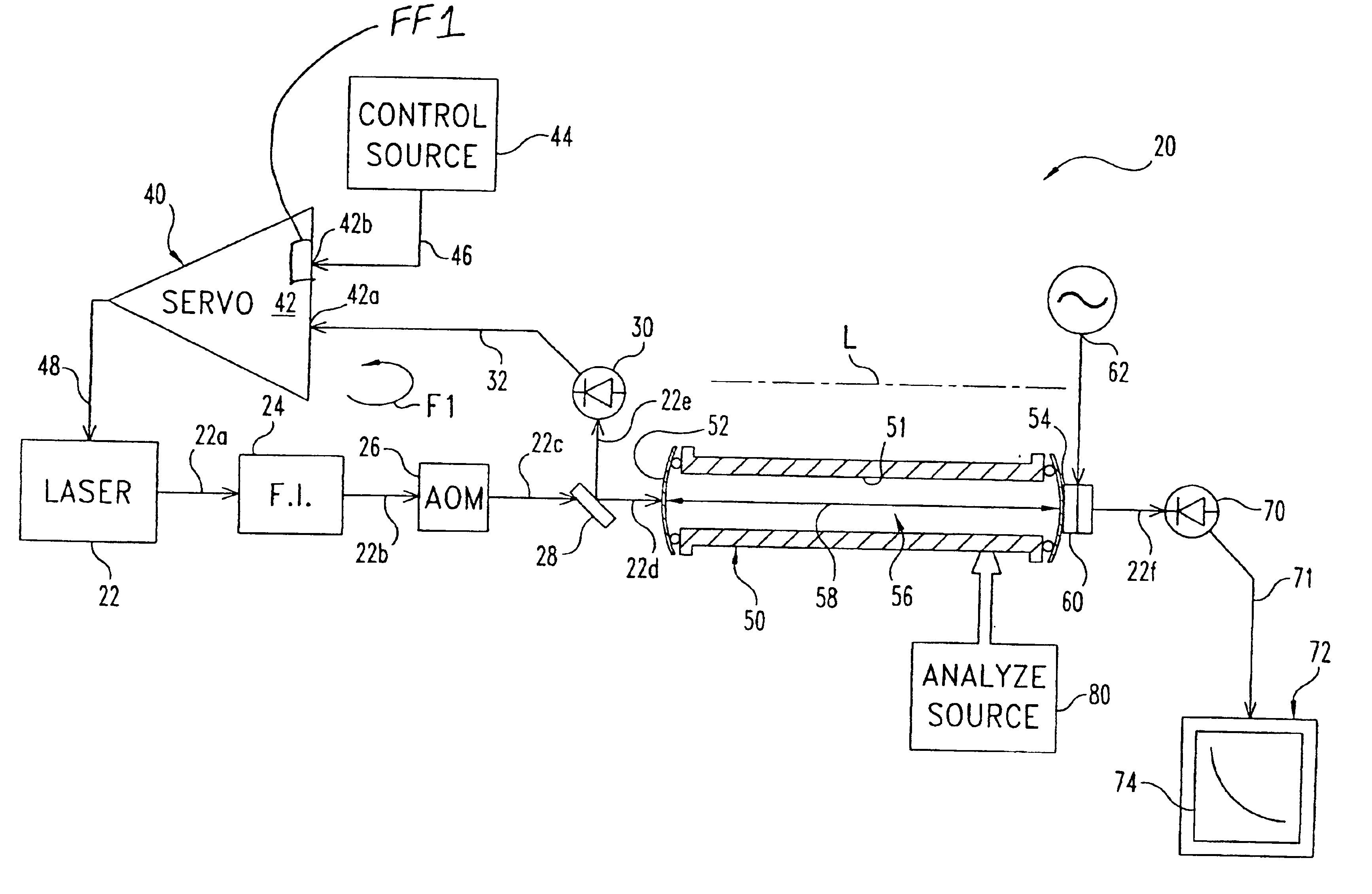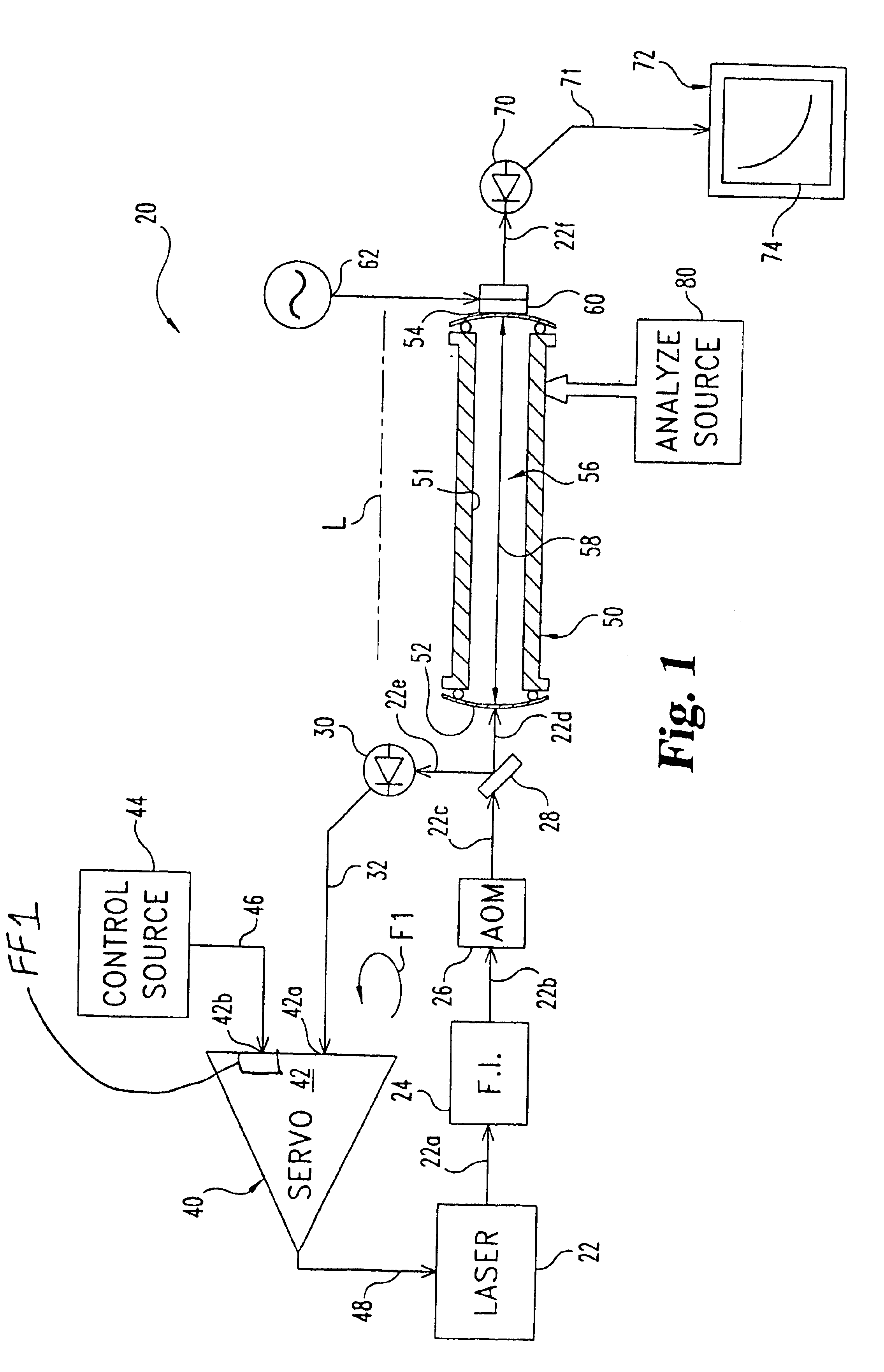Cavity ringdown spectroscopy system and method
a ringdown spectroscopy and cavity technology, applied in absorption/flicker/reflection spectroscopy, spectrum investigation, instruments, etc., can solve the problems of inaccuracy of the exponential fit of ringdown data, the inability to switch the resonance off and on, and the intrinsic speed limitations of aom switching, etc., to achieve the effect of stabilizing the resonating optical field
- Summary
- Abstract
- Description
- Claims
- Application Information
AI Technical Summary
Benefits of technology
Problems solved by technology
Method used
Image
Examples
experimental example
The present invention will be further described with reference to the following specific example. It will nevertheless be understood that this example is merely illustrative and is not intended to restrict or otherwise limit the scope of the present invention.
FIG. 3 shows ringdown data taken with an experimental arrangement of the type shown in FIG. 1. This arrangement shows an inverted exponential decay averaged over 100 sweeps, and a weighted exponential fit. It should be understood that the relatively quick and reproducible switching available with this technique allows meaningful averages to be taken without drift, washout, or various noise effects. The parameters of the exponential fit determine the ringdown time, facilitating a quick and accurate determination of the reflectivities of the mirrors used in the optical cavity. Similar experiments can be conducted to evaluate analytes as previously described in connection with FIGS. 1 and 2.
PUM
| Property | Measurement | Unit |
|---|---|---|
| optical field | aaaaa | aaaaa |
| current flow | aaaaa | aaaaa |
| frequency | aaaaa | aaaaa |
Abstract
Description
Claims
Application Information
 Login to View More
Login to View More - R&D
- Intellectual Property
- Life Sciences
- Materials
- Tech Scout
- Unparalleled Data Quality
- Higher Quality Content
- 60% Fewer Hallucinations
Browse by: Latest US Patents, China's latest patents, Technical Efficacy Thesaurus, Application Domain, Technology Topic, Popular Technical Reports.
© 2025 PatSnap. All rights reserved.Legal|Privacy policy|Modern Slavery Act Transparency Statement|Sitemap|About US| Contact US: help@patsnap.com



